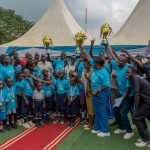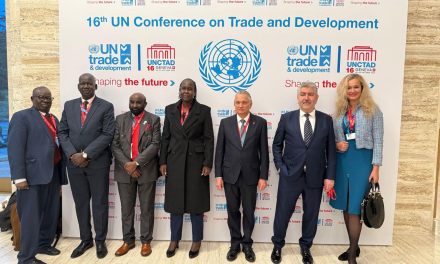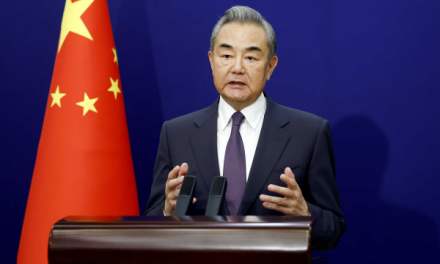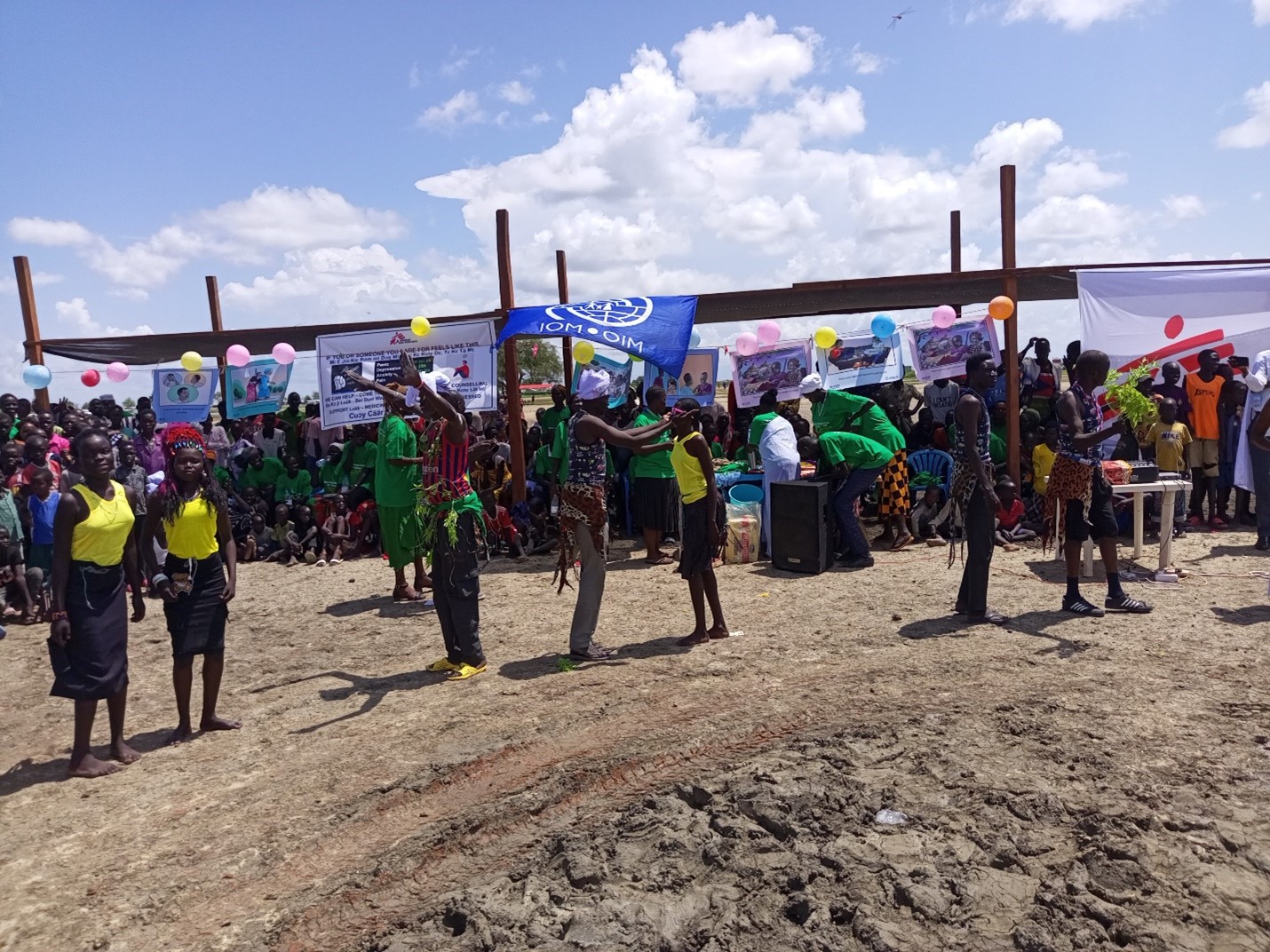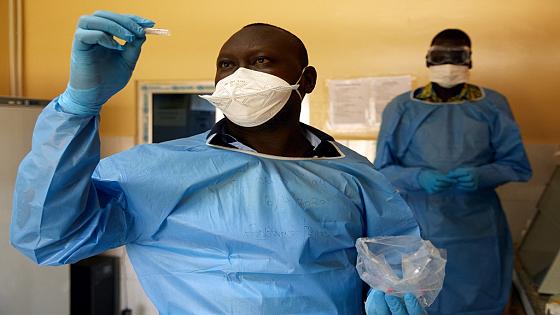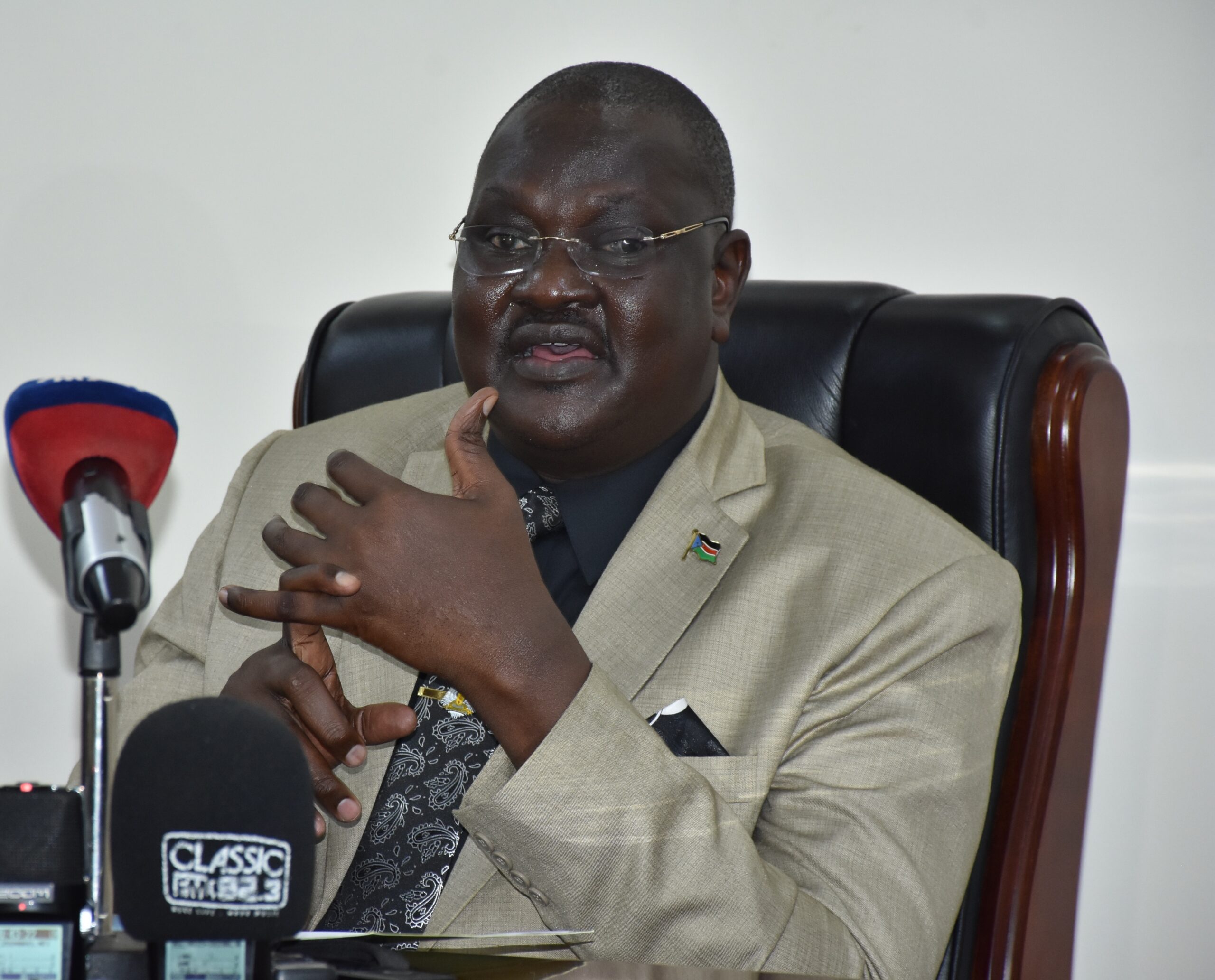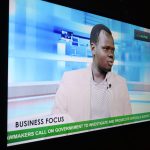
Guinea worm infection reported in South Sudan’s Jonglei

Dr. John Rumunu, the Director of Preventive Health Services at the Ministry of Health speaks to reporters in Juba on Sunday (Photo by Awan Achiek)
By Awan Achiek
South Sudan’s Health Ministry has reported a confirmed case of guinea worm infection in Uror County of Jonglei State this month.
The victim is a 13-year-old girl atWunethony village who presented with itching, swelling and blister like symptoms.
Dr. John Rumunu, the Director of Preventive Health Services at the Ministry of Health told the reporters on Sunday that the new case has been confined so far.
“The case is contained and therefore, no water sources were contaminated by the patient,” the health official narrated.
Dr. Rumunu was speaking during the weekly Sunday briefing on COVID-19 at Emergency Operation Center (EOC) in Juba.
The case was confirmed on August 5, following laboratory test at Center for Diseases Control of the United States of America.
Rumunu disclosed that the Ministry was strengthening robust surveillance to detect cases in order to break the transmission.
“Application of abate to all water sources to kill parasites, distribution of water filters to all the households as well as active search, raising public awareness of the disease, and the cash reward offered for voluntary reporting,” he said.
The health official reiterated the Ministry’s readiness to working with Canter Center, and World Health Organization in a bid to respond and ensure people’s safety as far as the disease is concerned.
“The Ministry of Health appeals to the citizens to remain calm and vigilant. Let’s report any rumors or suspected cases to the nearest health facility,” he said.
In 2006, South Sudan reported 20,581 cases from 3,320 endemic villages. This tally reduced to six cases in 2016 with the last human casereported in December 2016.
The Country established South Sudan Guinea Worm Eradication Program (SSGWEP) in 2006 with the aim to detect all cases of Guinea worm and effective intervention to break the transmission.
Guinea worm disease, often neglected tropical disease (NTD), is caused by the parasite Dracunculus medinensis.
The disease affects poor communities in remote parts of Africa that do not have safe water to drink as there is neither a drug treatment for Guinea worm disease nor a vaccine to prevent it.


